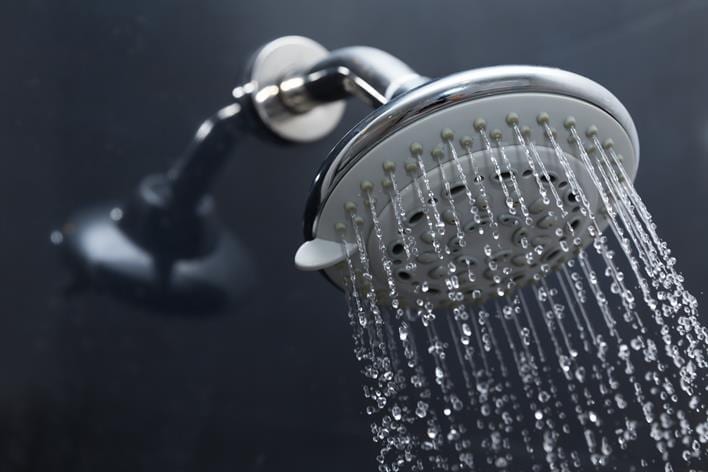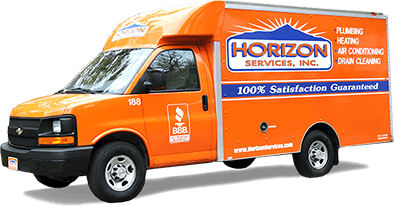
Don’t Let Your Money Go Down The Drain!
Wasteful water usage and unnecessary damage to plumbing can cost you BUCKETS of cash. Here are nine incredibly simple things YOU can do to prevent wasting water indoors and out while saving on your water bill!
Our expert technicians are here for youSchedule Online Today
1. Toilets:
- Leaks: Toilet leaks are often silent, allowing water loss to go undetected for long periods of time. A leaky toilet can waste up to 200 gallons of water per day. To detect these leaks, remove the lid from the toilet tank, remove any colored cleaning agents, flush to clear water in the bowl, and then add dye tablets, leak detector fluid or a few drops of food coloring to the water in the toilet tank. If the tank is leaking, color will appear in the bowl within 30 minutes. Flush as soon as the test is complete.
- Low-Volume Toilets: Since the mid-1990s, all new toilets have been redesigned to conserve water, using 1.6 gallons of water per flush. Older models use 3 gallons or more per flush. If your toilet is not a newer water-saving fixture, you might want to consider purchasing a newer model.
- Avoid flushing the toilet unnecessarily. Dispose of tissues, insects, and other such waste in the trash rather than in the toilet.
2. Faucets:
- Leaks: Dripping faucets can waste gallons of water per day. Check faucets regularly for leaks at the faucet head and seepage at the base and its connections.
- Low-Flow Faucets: Check the amount of water flowing from each faucet. You can do this by opening the faucet and allowing the water to flow into a container for 10 seconds. Multiply the amount of water in the container by six to determine the per minute flow. If your existing faucet flows above 2.5 gallons per minute, install a low-flow aerator. For a bathroom faucet, a 1.5 gallons per minute flow will provide enough water for personal hygiene needs. For a kitchetn faucet, you will want 1.5 to 2.5 gallons per minute of flow to make sure the flow of water is enough to wash and rinse dishes.
- Aerator Faucets: Aerators are circular screened disks, usually made of metal, that are screwed onto the head of the faucet to reduce flow. Aerators for kitchen faucts are available with a variety of spray patterns and flow-control features.
3. Baths and Showers:
- Use the minimum amount of water needed for a bath by closing the drain first and filling the tub only one-third full. The initial burst of cold water will be warmed by the hot water as the tub fills.
- In the shower, turn water on to get wet, turn off to lather up and then turn back on to rinse off.
- Turn off the water as you brush your teeth, wash your face or shave.
4. Laundry Tips:
- For washers with variable settings for water volume, select the minimum amount required per load.
- If load size cannot be set, operate the washer with full loads only.
- Use the shortest wash cycle for lightly soiled loads. Normal and permanent press wash cycles use more water.
- Check hoses regularly for leaks.
- Pre-treat stains to avoid rewashing.
- When you replace your clothes washer, consider a water-efficient model that uses an average of 27 gallons of water per load. Front loaders use 20-25 gallons. Older, inefficient washing machines can use as much as 56 gallons of water per load.
5. Irrigation Amounts:
- Apply moderate amounts of water to create a healthy drought- and stress-tolerant lawn. For most soils, up to three-quarters of an inch of water per application is enough to replenish the grass. Saturate the root zone, then let soil dry to encourage healthy, deep-root growth. Over-watering promotes weed growth, disease and fungus.
- You can use the “can method” to determine how much water to apply and to see if you are watering uniformly across the landscaped area. Place 5-7 wide-mouthed, flat-bottom cans (cans about the size of an average tuna can) throughout the area to be irrigated. Wait 30 minutes and then measure the depth of water in each can. Average the measurements and use this number to determine how long you need to water the area to apply three-quarters of an inch of water.
6. Irrigation Methods:
- Irrigation can be done in two basic ways – with a hose and sprinkler or an in-ground irrigation system. When using a hose and sprinkler, place the sprinkler in the driest area. Allow the sprinkler to run the proper length of time to apply up to three-quarters of an inch of water. When that area is complete, move the sprinkler to another dry area. Place the sprinkler so that its water spray will overlap the area previously watered. Position the sprinkler so that your water lands on the lawn and shrubs, not on paved areas.
- In-ground irrigation systems can be automatic or manual or a combination. The automatic system is set for a predetermined time of day and days of the week. Make sure it is set for a predetermined time of day and days of the week. Make sure it is set for early morning or late afternoon, set for up to two days a week and operates long enough to apply three quarters of an inch of water. Learn how to operate your system. Check timing devices regularly to make sure they are operating properly. Watch for broken or misdirected sprinkler. During extended periods of rainy weather, irrigation systems should be turned off.
7. Lawn Fertilization:
- Fertilize in moderation. Typically a 15-20 pound bag of fertilizer is enough to feed a half-acre lot for an entire growing season. This is enough fertilizer to feed the grass roots without allowing the fertilizer to run off the lawn.
- Fertilize only during the growing season. Allow a month between autumn application and the time of freeze if possible, allowing new growth to harden off and become less vulnerable to frost. Feed in spring with a complete micronutrient fertilizer. Use pesticides only when needed and ju on affected areas.
8. Lawn Mowing:
- Cut your grass at the highest recommended height for your turn species or the highest setting on your lawn mower.
- Cut no more than one-third of the grass length to encourage grass roots to grow deeper and grass blades to hold moisture.
- Keep mower blades sharp for a clean cut; dull blades tear grass, opening it to disease.
- Leave short grass clippings where they fall. They reduce the lawn’s need for water and fertilizer. Remove thick patches of clippings so that they will not kill the grass underneath.
9. Additional Tips (Indoors and Outdoors):
- Operate the dishwasher only when you have a full load. When purchasing a dishwasher, consider a water-efficient model.
- When washing dishes by hand, fill one sink or basin with soapy water and fill the rinsing sink to one third or one-half full. Avoid letting the water run continuously in the rinsing sink.
- Kitchen sink disposals require a lot of water to operate properly. Start a compost pile as an alternative method of disposing of food waste instead of using a garbage disposal.
- Do not use running water to thaw meat or other frozen foods. Defrost food overnight in the refrigerator or by using the defrost setting on your microwave.
- Install instant water heaters in bathrooms and in the kitchen so you don’t need to run water while it heats up.
- Insulate your water pipes. You’ll get hot water faster plus avoid wasting water while it heats up.
- Pay attention to your hose. Left unattended, a garden hose can pour out as much as 600 gallons of water an hour.
- Check all hoses, connectors and spigots regularly to make sure they are in good working order.
- Use a broom to clean leaves and other debris from sidewalks and driveways rather than a hose. Using a hose to clean a driveway can waste hundreds of gallons of water. Outfit your hose with a shut-off nozzle that can be adjusted so water flows only as needed. When finished, turn it off at the faucet instead of at the nozzle to avoid leaks.
- Use hose washers between spigots and water hoses to eliminate leaks.


